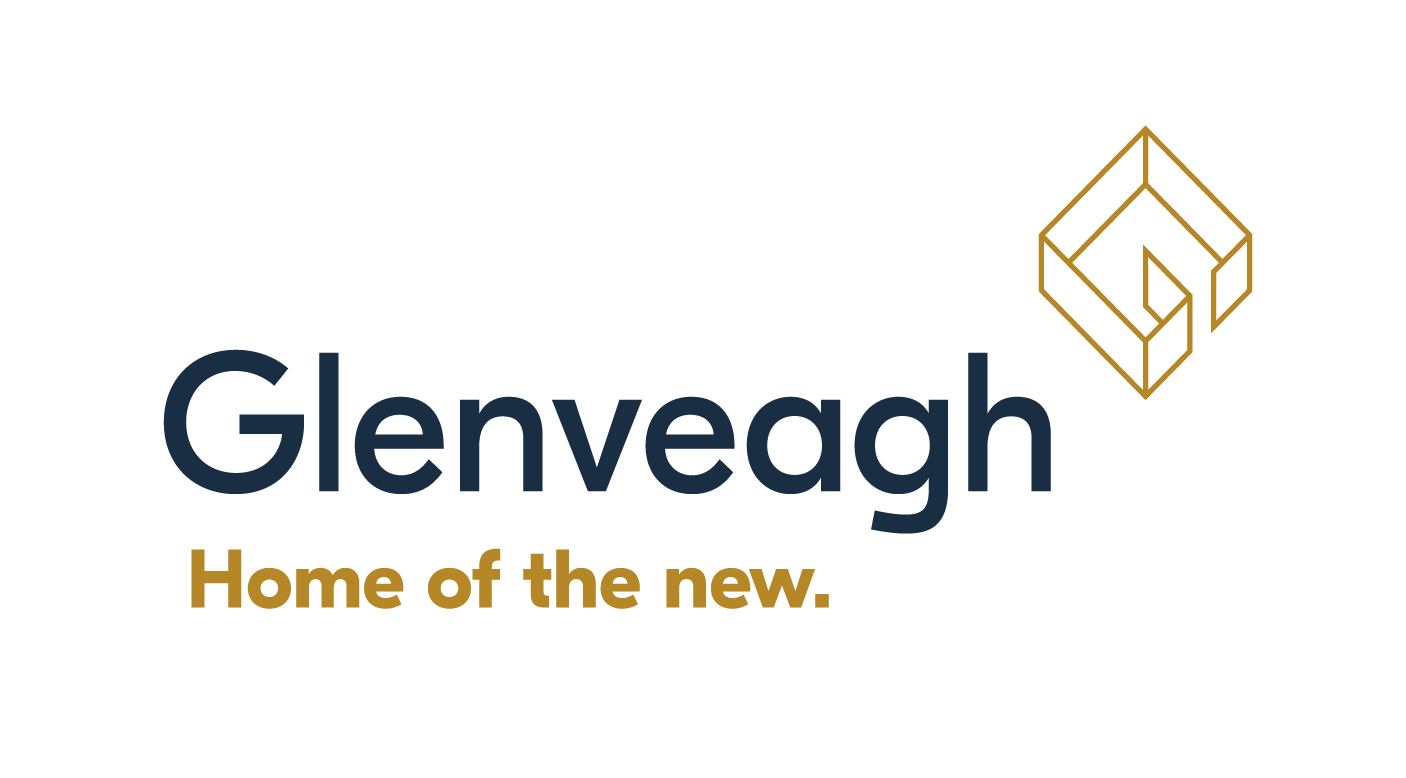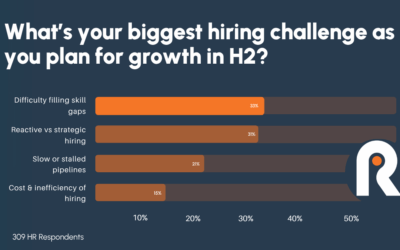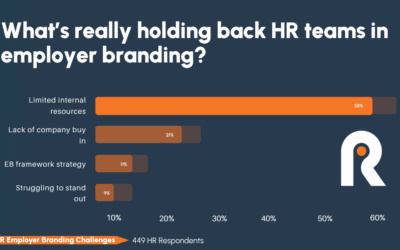Recruiting a Diverse Workforce
Skills shortages are putting more pressure on industries than ever, businesses need to get creative. One key strategy is learning how to recruit a diverse workforce to tap into fresh talent pools. This guide explores the opportunities that come from addressing skills shortages, offering practical ways to diversify your talent and build an inclusive culture that supports that diversity. By embracing diversity and inclusion, businesses can meet their immediate talent needs while also becoming more innovative, competitive, and ready for the future.
Opportunity: Addressing Skills Shortages Through Diverse Talent
The global labor market is facing significant talent shortages across industries. According to ManpowerGroup’s 2023 Talent Shortages Survey, 69% of employers are struggling to fill roles, highlighting the urgent need for new approaches to talent acquisition. In the construction industry, for example, the shortfall in skilled workers is exacerbated by long-term trends like a decline in apprenticeships and an aging workforce.
However, these challenges also present an opportunity. Understanding how to recruit a diverse workforce by reaching out to underrepresented groups—including women, minorities, displaced individuals, and refugees enables businesses to access new skills and perspectives that drive innovation and long-term growth. Hiring from diverse talent pools not only fills vacancies but also leads to improved decision-making, increased creativity, and higher profitability.
Diversification Strategies: Attracting and Retaining Diverse Talent
When considering how to recruit a diverse workforce, businesses must first address the inclusiveness of their hiring processes. Start by ensuring that job descriptions are skill-based and free from bias, removing barriers like unnecessary years of experience and gendered language. Using tools to scan and adjust the language of job postings can make positions more accessible to a wider range of candidates.
Additionally, sourcing candidates through diverse recruitment channels helps to reach a broader audience. For example, targeting female graduates in traditionally male-dominated industries, such as construction, has proven effective in increasing gender diversity. Glenveagh, a leader in construction, has seen significant success by setting clear diversity targets and investing in inclusive recruitment strategies, resulting in 33% of their workforce being women, compared to the industry average of just 9%.
Creating an Inclusive Work Culture: Supporting Diverse Talent
Understanding how to recruit a diverse workforce is only the first step; creating an inclusive work culture is crucial for retention. Organisations must develop policies that promote belonging and accommodate diverse needs, such as flexible work arrangements, family-friendly policies, and support systems like buddy programs.
Employee network groups, such as women’s networks, and initiatives like flexible parental leave, menopause policies, and multicultural facilities (e.g., faith rooms) are practical steps businesses can take to support their employees’ diverse backgrounds. Providing clear pathways for career growth through training and mentorship programs further ensures that diverse employees feel valued and supported in their long-term career development.

Case Study: Glenveagh’s Journey to Inclusivity
In 2023, Glenveagh achieved 33% female representation within their workforce, far surpassing the industry average of 9%. This success was driven by a clear diversity strategy that included setting a target for female graduates, developing family-friendly policies, and creating employee resource groups. Their inclusive approach not only improved representation but also enhanced overall employee satisfaction and retention, especially among women in leadership roles.
Key Recommendations for HR Leaders
- Use Data to Make the Case for Diversity: Share both internal data and external research (e.g., McKinsey studies) to demonstrate the business case for diversity. Highlight the financial and operational benefits of a diverse workforce.
- Create Champions of Diversity: Engage senior management by identifying diversity champions within the organisation who can drive initiatives and advocate for change at the executive level.
- Invest in Cultural Competency: Equip managers with training on cultural intelligence, unconscious bias, and inclusive communication. This ensures that all employees, regardless of background, feel supported and included in the workplace.
- Offer Support Systems: Provide tools like reasonable accommodation passports for employees with disabilities, buddy systems for new hires, and comprehensive family-friendly policies.
- Collaborate with External Partners: Engage with organisations like the Open Doors Initiative or Talent Beyond Boundaries to source diverse talent and receive guidance on best practices for integrating marginalised groups into the workforce.
- Learn How to Recruit a Diverse Workforce: Ensure that your recruitment team is trained and aware of best practices for attracting diverse talent. Tailor your recruitment processes to be inclusive, utilising resources like external partnerships and recruitment channels that target underrepresented groups.
Practical Steps for Implementing Diversity and Inclusion Strategies
- Set Clear Diversity Targets: Define measurable goals for diversity within your workforce, such as gender, ethnic, or ability-based representation in leadership or entry-level positions.
- Evaluate Current Processes: Regularly audit your recruitment and retention processes to ensure they align with diversity goals and remove unintentional biases.
- Provide Mentorship and Development Programs: Establish pathways for career progression, particularly for women, minorities, and underrepresented groups, through mentoring and leadership training.
- Communicate Diversity Efforts: Ensure your diversity and inclusion initiatives are well-publicised both internally and externally. Use your careers page and social media to highlight your progress and commitment.
- Invest in Leadership Training: Equip senior leaders with the knowledge and tools to foster an inclusive workplace culture. This can include workshops on unconscious bias, inclusive leadership, and supporting diverse talent.
Additional Strategies for Inclusive Hiring
- Skill-Based Descriptions: Focus on skills, behaviors, and values alignment rather than setting strict criteria like “years of experience,” which can limit applications from qualified but non-traditional candidates.
- Transparency: Map out the entire recruitment process on the company website, detailing what candidates can expect, and remove barriers that may intimidate or discourage diverse candidates from applying.
- Inclusive Language: Regularly review and update job descriptions to ensure that they are free from biased or exclusionary language.
- Leverage Success Stories: Share testimonials and stories of employees from diverse backgrounds to humanise your inclusion initiatives and demonstrate their real-world impact on the business and individuals.
Diversity Metrics & Reporting
Tracking diversity metrics is essential to ensure progress and accountability. Regularly reporting these metrics to leadership can help identify areas for improvement and demonstrate the return on investment (ROI) for diversity efforts.
Tracking Progress:
- Surveys and Tools: Implement anonymous surveys and tracking tools to measure the diversity of your candidate pipeline and workforce.
- KPIs: Use key performance indicators (KPIs) such as retention rates, promotion rates, and engagement scores for diverse groups.
- Annual Reports: Present diversity metrics in annual reports to show commitment to inclusion and to provide transparency.

Role of Leadership in Driving Inclusion
Senior leadership buy-in is crucial for the success of diversity and inclusion initiatives. Leaders should play an active role in fostering an inclusive culture.
- Lead by Example: Participate in D&I initiatives, attend workshops, and promote inclusive behaviors.
- Allocate Resources: Ensure there are enough resources (budget, time, personnel) dedicated to diversity programs.
- Communicate Regularly: Frequently communicate the importance of inclusion across all levels of the organisation, reinforcing the company’s commitment to D&I.
Future Outlook: Preparing for Tomorrow’s Workforce
As industries continue to evolve, businesses must prepare for future workforce trends, including:
- Remote Work: Remote and hybrid work environments are increasingly attractive to younger generations and diverse candidates. Consider flexible work models to meet employee expectations.
- Global Talent Acquisition: With the rise of digital platforms and international recruitment programs, tapping into global talent pools (including refugees, displaced individuals, and underrepresented groups) will become crucial.
- Generation Z and Millennials: These generations highly value diversity and inclusion in the workplace. Offering a diverse and inclusive culture can be a key factor in attracting and retaining top talent from these groups.
Key Statistics from our Recent Diversity Webinar
Webinar “Diversify your talent pipeline for commercial success”
Global Skill Shortages:
According to ManpowerGroup’s 2023 Talent Shortages Survey, 69% of employers globally report difficulty in filling roles across all sectors.
Construction Industry Shortages:
Ireland’s Construction Industry requires 50,000 new entrants by 2030 to meet housing targets.
In 2023, only 1,500 new apprentices joined the construction sector, far below the needed level to sustain growth and meet demand.Educational Imbalance in Ireland:
Ireland has the highest per capita of third-level degree graduates in Europe, yet there remains a significant shortfall in those entering trades, compared to countries like Germany.
Diversity and Performance:
Companies with diverse workforces are 35% more likely to outperform their competitors financially (McKinsey).
97% of employers who have hired refugees or displaced talent recommend it, with 57% reporting enhanced competitiveness in their markets (LinkedIn research).
Gender Representation in Construction:
The average female representation in the construction industry in Ireland is only 9%. However, at Glenveagh, female representation has risen to 33%, including 43% women on the board of directors.
Talent Retention:
Organisations hiring displaced talent through international programs reported retention rates of 93%–97% after one year of employment.
Hiring and Inclusive Culture:
Companies that actively embrace diversity and inclusive practices see a 5% improvement in decision-making processes, contributing to better business outcomes (McKinsey).
Ireland’s Employment Context:
Ireland is currently operating at full employment, making it critical for businesses to explore non-traditional talent pools, such as international talent, refugees, and underrepresented groups.
Tools to Help with Job Descriptions
- Language Analysis Tools: Free Online Tools: Using a free online tool to analyse job descriptions for gender-coded language. These tools help identify language that may unconsciously deter certain genders from applying, such as overly masculine or feminine wording. Some examples of such tools include:
- Textio: An augmented writing platform that helps to optimise job descriptions and avoid gender bias.
- Gender Decoder: A simple tool that scans text for gender-coded words to ensure neutral language.
- AI Tools for Rewording and Clarity: AI Tools like ChatGPT are recommended to help rephrase questions and rewrite job descriptions in a more inclusive and neutral manner. This can help employers eliminate biased language, create clearer job descriptions, and open the position to a broader talent pool.
Addressing the current skills shortages requires a proactive, inclusive approach to recruitment and retention. By diversifying talent pools, businesses not only fill critical roles but also create a culture of innovation and resilience. Knowing how to recruit a diverse workforce and fostering an inclusive environment where all employees can thrive is key to long-term commercial success. By committing to diversity, equity, and inclusion, organisations can build a more dynamic, competitive, and future-ready workforce.
How to Recruit a Diverse Workforce FAQs:

What are the first steps HR leaders should take to recruit a diverse workforce?
HR leaders should start by evaluating their current hiring processes. This means removing biases from job descriptions, diversifying recruitment channels, and ensuring inclusive hiring practices. It’s also essential to set clear diversity goals and measure progress regularly to hold the organisation accountable.
How can we ensure our workplace is inclusive to retain diverse talent?
Retention starts with creating a culture of inclusion. This includes providing flexible work arrangements, offering mentorship programs, creating employee resource groups, and fostering an environment where diverse voices are heard and valued. Regularly checking in with employees from underrepresented groups helps ensure their needs are being met.
How can employers measure diversity within their organisation, without this feeling intrusive to employees?
To measure diversity without making employees feel uncomfortable, employers can use anonymous and voluntary surveys, allowing staff to self-identify their demographics.
It’s crucial to emphasise confidentiality and explain that the data will support diversity efforts.
Ensuring transparency and choice is key to fostering trust.
What are the challenges HR leaders face in recruiting a diverse workforce?
One of the biggest challenges is overcoming unconscious bias in recruitment processes. HR leaders must be intentional about recognising and addressing these biases by providing training for hiring managers. Another challenge is sourcing talent from diverse backgrounds, which can require tapping into new recruitment platforms and networks.
How can we measure the success of our diversity recruitment efforts?
Tracking key metrics such as the diversity of your applicant pool, hiring rates, retention, and promotion of diverse candidates is crucial. Regularly conducting employee engagement surveys and gathering feedback from diverse groups can also provide insights into how inclusive your workplace is and where improvements can be made.
Talk to our team
Find out how we can help!


